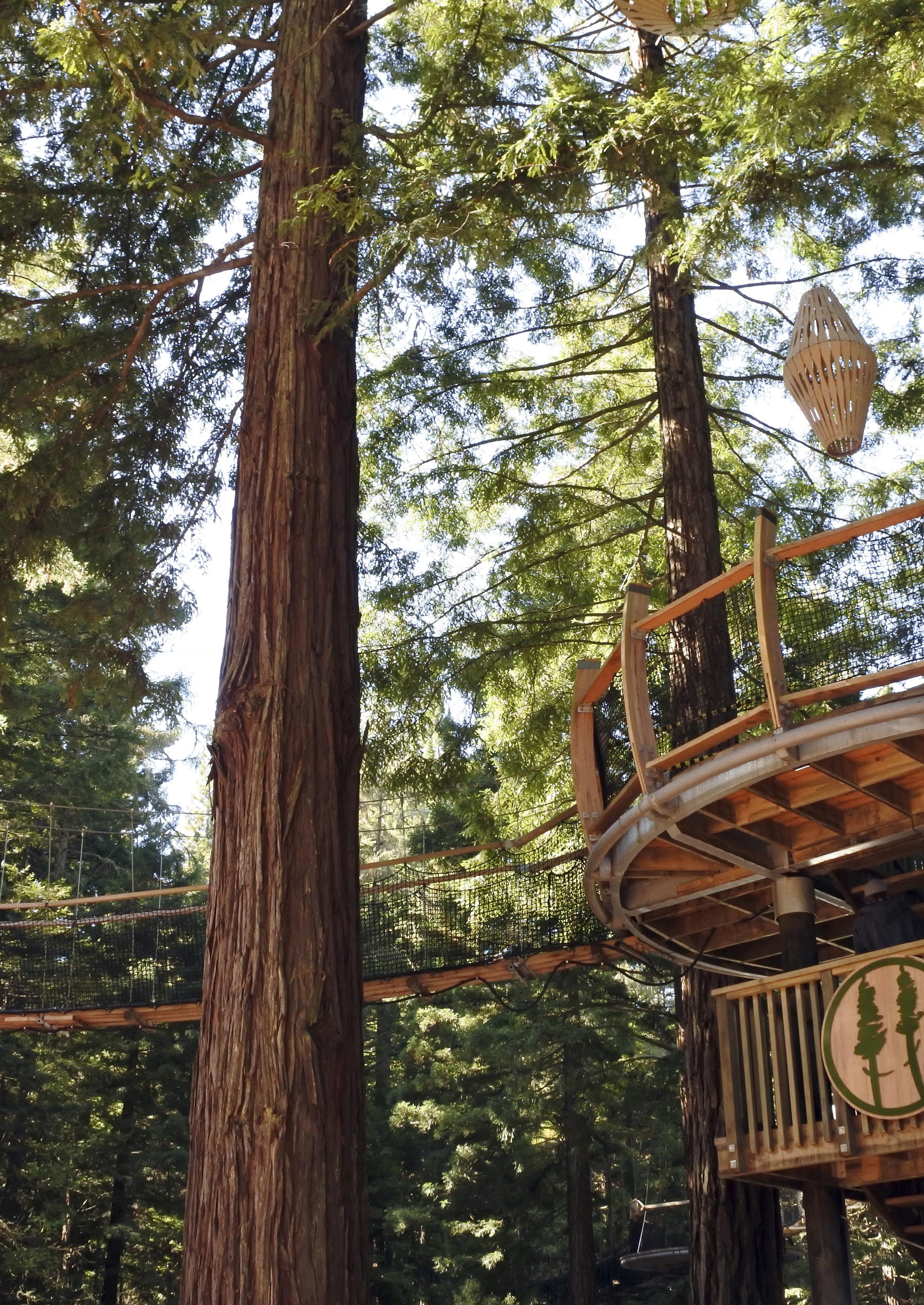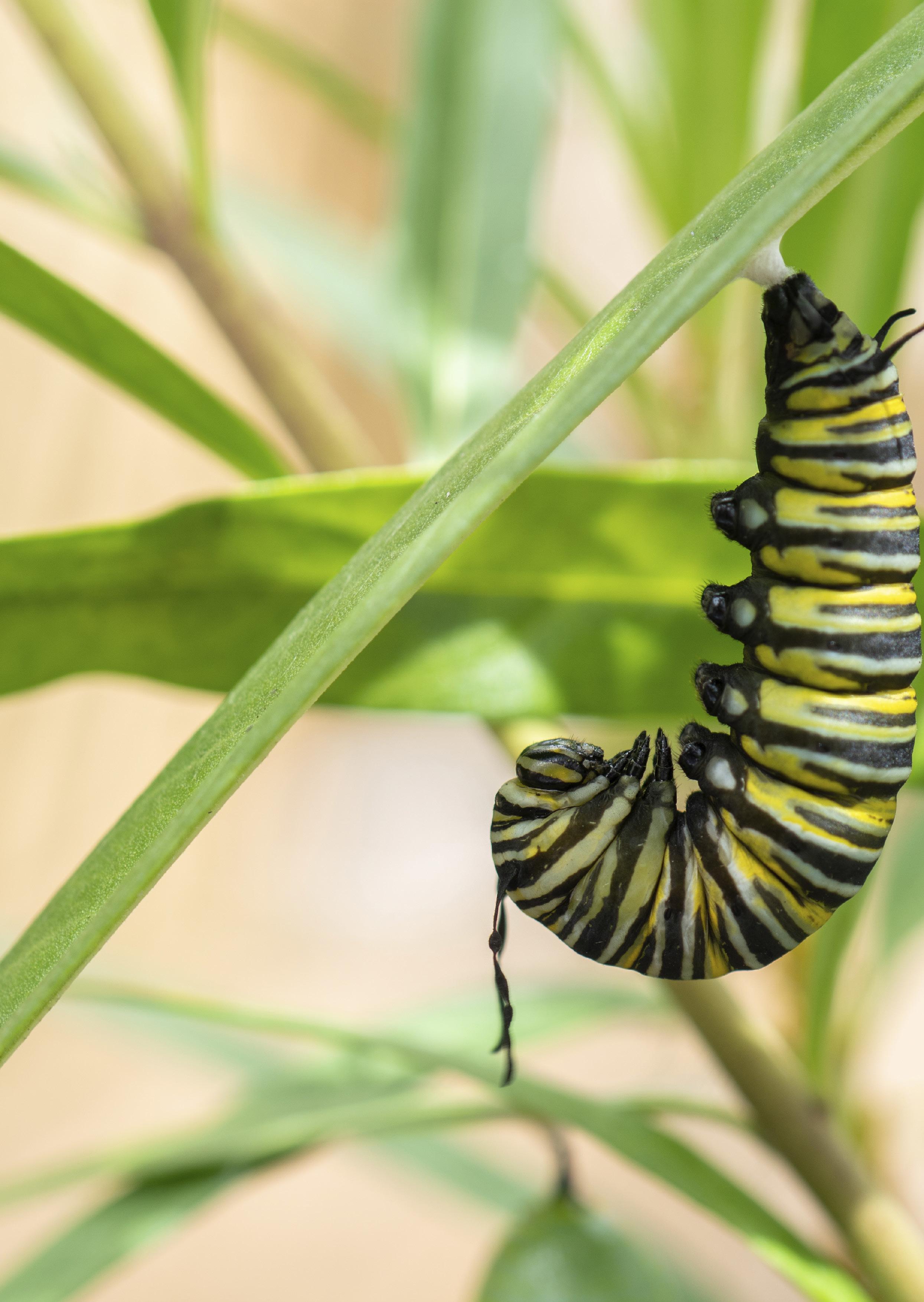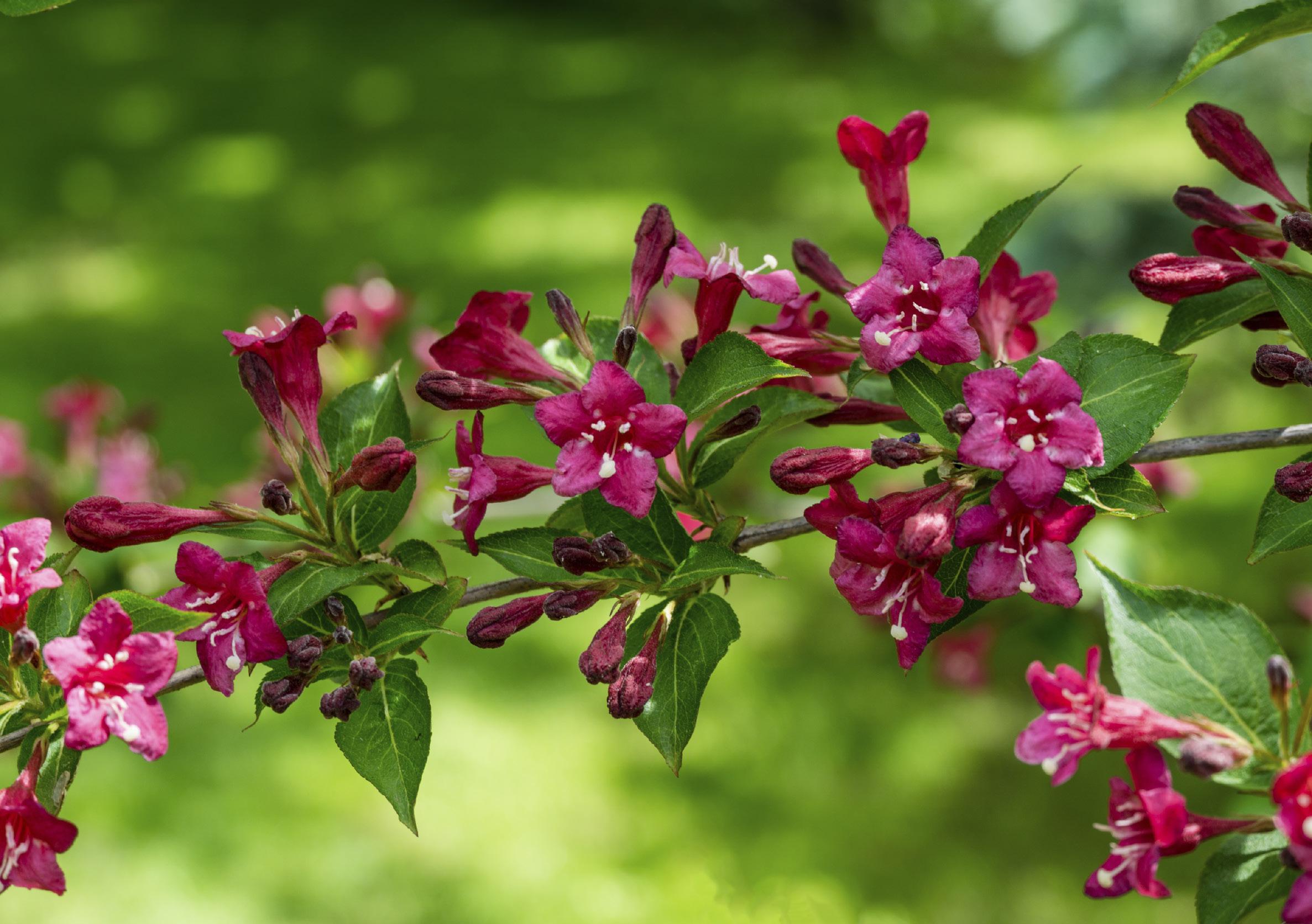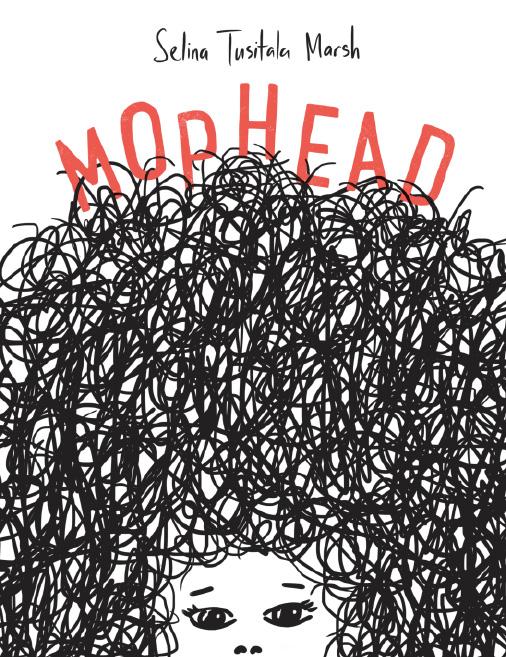
15 minute read
Seeingthe wood from the trees
from South September 2020
by Times Media
Top of the trees, ground level walk, light saber duelling session – our boys loved Rotorua’s Redwoods.
SEEING THE WOOD from the trees
Kiwis have been urged to support ‘local’ wherever possible; this includes exploring New Zealand to assist the tourism industry. HELEN PERRY has been trying to do her bit (before the latest Covid-19 blip) and although she has travelled to Rotorua many times, another recent visit produced a new experience.
LeavingAuckland, I blithely told my family that in the next day or two they could find me –and my two grandsons –‘way above the chimney tops’… a quip which was completely lost on them and perhaps, on some readers too.
I was, in fact, quotingfrom the Judy Garland song, Somewhere Over the Rainbow, thinkingit entirely appropriate as we were booked on the Redwoods Treewalkin Rotorua. And, indeed, beingbetween nine and 20 metres above the ground did indicate we could be above a few chimneys tops, ifwe could only see them.
But I digress, this day trip was part ofBay ofPlenty sojourn, staying with my son-in-law’s parents where I was to leave the grandsons for a few extra days duringthe recent school holidays.
It started perfectly with three hours watchingthem splash, swim and dive at Baywave Aquatic and Leisure Centre, Mt Maunganui –a wonderful complexwith tube slides, several pools and a wave function.
The followingday we were offto Rotorua and a further three hours watchingthe boys ride the luge (not for me), and a marvellous one hour wander (me too) high amongst 118-year-old Redwoods stretching 75 metres up to the sky –what a lofty thrill that was.
I had longwanted to visit the park and do the walkwhich takes visitors across eco-suspended bridges and platforms designed to accentuate the natural environment.
I should mention, one lookat the somewhat narrow planksuspension bridges and we were careful to adhere to instructions –no more than eight people on a bridge at any one time and no more than 20 people on a platform at any one time. Thankfully, everyone else heeded the rules and crossingeach bridge was really very easy.
We also made sure to access the 20 metre level (optional) but, on this occasion, the Redwoods Altitude adventure wasn’t viable, partly because ofcost and partly because I didn’t thinkit suitable for our younger, eight-year old grandson.
However, for those with an adventurous spirit, the option of beingharnessed, ascendinga further five metres and also using the zipline would undoubtedly be exhilarating. Add in some Redwoods history, local Maori legend and information about bird species, it’s a winner!

At $80 for our party offour to do the basic tree walk, with the lovely TreewalkNightlights included, this seemed extremely fair especially as we were given three nights to return for the night walkifwe didn’t wish to do it that same day.
The walktookabout 45 minutes givingus plenty oftime to negotiate bridges and platforms and to admire the view –up, down and around!
The boys then went around a second time before we all set offon a ground level walk.
As we wandered, by chance we came across three grown up lads practisinglightsaber combat.
They kindly invited our two likely lads to have a go and carefully instructed them in three essential movements. I was so impressed they tooktime out for the boys and equally impressed at the youngsters show ofability.
For those bewildered by the “sport”, the lightsaber is the (fictional) signature weapon ofboth the Jedi and their Sith counterparts in the Stars Wars movie series and has now become somethingof a modern day form offencingor sword-play –my grandsons were right into it.
By time our day in Rotorua had ended and I had departed the greater Bay ofPlenty, leavingmy grandsons in the capable hands or their other grandparents, I was feelingoverjoyed at havingsome special time with them.
I enjoy a special relationship with my son-in-law’s parents –we are great friends and it was his mum and I who relished these precious personal outings with our children’s offspring.
Furthermore, after all these years ofregular visits, there was nothingho-hum about Rotorua; it still captivated me –roll on next holidays.

BE INSPIRED by the water’s edge
Stay by the lake Explore Wanaka
0800 108 311 www.edgewater.co.nz Complimentary drink on arrival. Use promo code: STH
Nature’s swan song

Even ugly ducklings will, one day, become beautiful swans. The same is true of the monarch caterpillar as it evolves from grub into winged wonder.
Although usually small, swan plants (Asclepias fruticosa), can grow to between one and two metres in height. Aform of milkweed, characterised by its large seed pods and white flowers, swan plants are better known as a favourite source offood for the monarch butterfly.
Springis the ideal time forsowing swan plant seeds. Choose a location which has full sun to part shade in the afternoon. As you’ll want to attract caterpillars to yourswan plant, place away from otherplants you intend to spray with insecticide and place farfrom otherplants caterpillars may fancy, otherwise they may jump ship lookingforgoodies elsewhere!
Prepare the soil by removinggrass or weeds and workin compost to a depth ofapproximately 10cm. Seeds should be placed roughly 15-20cms apart (to allow adequate room for growth) and covered with 60mm ofsoil and seed raisingmix. Make sure the soil is kept moist, wateringfrequently ifthe soil becomes dry. Once the seeds sprout less wateringwill be necessary –twice a weekshould be sufficient. Once they begin to bend, keep swan plants upright by tying them loosely to stakes.
Three-four times duringthe course ofthe season apply liquid fertiliser but, for obvious reasons, never use insecticide on swan plants!
Swan plants can survive outdoors over winter providingthey are cut backto the ground in autumn. A little mulch can go a longway to protectingthe roots from frost.
When plants are still young, remove some ofthe eggs to ensure they don’t become overpopulated. Remember that, Iftoo many caterpillars hatch, they may strip the swan plant bare and even move on to other plants in the garden. a fantastic example of metamorphosis in nature, but an understandingofthe symbiosis ofplants and insects. However, nature doesn’t always play ball and fit in with our busy schedules.
So you don’t miss out on that wonderful moment of metamorphosis, carefully remove one ofthe leaves on which a chrysalis has formed, tape both ends to a coat hanger and hang inside. This will ensure you’ll have a ringside seat to watch nature in action.
Swan plant seeds can be purchased online, at garden centres, supermarkets and hardware outlets and the plants available from nurseries.

SPRING TRUMPETS ARRIVAL OF pretty weigela
When springis in full bloom, one somewhat old fashioned, but very pretty shrub, is in the pink, or perhaps the crimson, the white or the cream!
An easy shrub to grow as it is frost hardy and not too fussy about soil type, when placed in a mixed border, Weigela florida will be a star while it flowers.
What’s more, on smaller properties this plant, when well pruned, is a beauty –a healthy plant will also give an illusion ofleafy fullness on a section without the worry ofit growing too big.
Pruningweigelas when flowering is over, (usually late spring/ early summer) helps keep them well formed and lookinghealthy. Shoots which have borne flowers should be cut out quite ruthlessly before the tips start to make new lanky growth which will flower the followingyear. Early trimmingwill also prevent gardeners from inadvertently pruningoffnext year’s flowers.
Any shoots left on the husks ofold flowers can ruin the overall look ofthe bush duringthe following year, and in time. growth will become floppy and sparse. Pruning encourages vigorous shoots to grow lower down in the bush. Mature plants should also have some older wood removed from ground level each year so that the whole shrub undergoes a constant process ofrenewal.
Ifseekingto rejuvenate, trim no more than one-third ofthe branches out from the bush. If the bush is made up ofmore than one-third ofthese older, thicker branches, then remove only one-third ofthe shrub and plan to repeat the process next year.
Named after 19th-century German botanist, Professor C.F. Weigel, the plant should be pronounced ‘vygella’ (with a hard ‘g’) but most people pronounce it as, ‘wygeela’. Originally found in North China, Korea and Manchuria by Robert Fortune it is thought they were imported to England in about 1845.
Followingthe openingofJapan to Westerners, several weigela species (sometimes referred to as weigelia) were ‘discovered’ by European plant-hunters in the 1850s and 1860s.
Today, these deciduous shrubs/ trees are admired for their small, showy trumpet-shaped flowers which are generally carried in groups ofthree or four on short shoots.
Perhaps the most common and most popular is the delicate pink W. Florida variegata although there are many other varieties with colours rangingfrom soft pinkto deep rosy purple, crimson, white and cream. This variety is also favoured for the clean variegation ofits leaves which, unlike some weigela, give it another dimension when not in flower. Most reach a little over 1.5 metres although some can grow taller and wider, makingthem more appropriate for large gardens. Pruning, ofcourse, will control their size.
Although it can be found in nurseries, weigela can also be grown from cuttings so ifsomeone has a bush you admire then askto take a cutting. Hardwood cuttings ofnaked shoots are best taken in winter, or semi-hardwood shoots in high summer.
Feed with a little rose fertiliser and mulch to give new plantings a good start or to boost flagging trees.
Weigelas are not fussy about soil pH, are happy in sun or light-dappled shade, and are not particularly prone to pest attacks. While they can be a stand-alone shrub in the garden they lookbest amongother floweringshrubs and can lookespecially eye-catchingin an old-fashioned mixed border.
CHICKENS
AS PETS

DrNikki Frost, seniorvet at Franklin Vets Pukekohe shares some tips forkeepinghappyand healthy chooks. sheets ofnewspaper under the roostingarea –these can be whipped out every couple of weeks and chucked straight in the compost.
Chickens make great pets, with the bonus of providing tasty, free-range eggs but, like all birds and animals, they need the proper, food, accommodation and care. Take note of the following:
Purchase two or more birds
to start a new flock; never just one as they are social animals and happier in a flock. In urban Auckland, residents are allowed ensure layingboxes are always
to have up to sixhens but no roosters.
Buy good-quality chook food as their main food source.
Chickens are omnivores and will eat anythingwe do so leftover dinner scraps can be fed to them but do not give them citrus peels, onion skins or shell grit to provide the calcium the shells then crush them and
uncooked potato peelings.
Provide clean drinking water
–they drinkbetween 500ml and 1L per day dependingon weather conditions.
Choosing a coop: It doesn’t need to be palace-sized as chooks like sleepingclose together. You’ll need around 20cm ofperch space per bird, about 30cm x30cm. One nest boxis sufficient for five to sixhens. Line the nests with somethingcosy such as wood shavings, shredded newspaper, dried leaves or soft straw. Lay
Make sure your coop has dark
nest boxes, perches for roosting and somewhere chickens can shelter from sun, rain and draughts.
Replace dirty litterfrom under their roosts regularly and clean.
Your hens will also need a
fenced-off area (or ‘run’) where they can roam, forage, scratch and take dust baths.
Ensure a constant supply of
they need to make good strong eggshells. Don’t give chickens raw eggshells or they may start eatingtheir eggs. Clean and dry while nest boxes should be
scatter in the chickens run.
Trim the feathers on one wing offlighty birds while they sleep so they cannot fly off.
Chickens can pick up all kinds
of internal parasites and will occasionally need treatment. Talkto your local vet clinic about the right treatment and stand down periods.
Need a vet?

Franklin Vets Papakura and Pukekohe are open 7 days and late nights
COUNTING UP DOG-FRIENDLY cities

Hands up all those who think New Zealand is not only God’s own for humans but a dog’s paradise too. Whoopsy, not quite!
Although little is known about the rest ofthe country, Auckland has ranked only 45th amongthe best 50 cities worldwide for dogs in a study commissioned by German insurance company, Coya.
It examined a range ofissues and infrastructure which promote canine ownership, such as petfriendly parks and restaurants, as well as data on the number of dogs per capita and the cost of lookingafter a pet.
On the otherhand, one ofthe few positives ofthe Covid-19 pandemic has been a sharp gloabal rise in dogadoptions. Although, given the economic fallout ofthe virus, there is growingconcern that an increase in abandoned dogs is to come.
Undoubtedly, dogownership is not always a simple or easy responsibility but having canine companions duringthe Covid-19 crisis has been invaluable to many folk. Dogs have offered affection and the perfect excuse to go for a walk. Yet, as the economy feels the true impact of the crisis, some animal owners won’t be able to afford their pets especially ifthere is no pet insurance.
Coya’s study aimed to reveal those cities which best catered for dogowners with superior, pooch-friendly infrastructure, and those where dogs were treated better accordingto the abandonment rate.
The data also looked at where dogowners do and don’t follow the rules (and yes, we do mean pickingup poop), and which cities were committed to keeping streets clean and safe fordogs by penalisingmisbehaviour. Arange offactors, which make a city pooch-perfect, were taken into consideration such as plentiful parks, pet stores, vets, and dog-friendly hotels and cafes. Furthermore, as much as dogowners love their pets, dogs can cost a bundle so, therefore the lifetime cost of keepinga dogwas also taken into account.
Interestingly, Basel Switzerland showed the lowest abandonment rate followed by Zurich (Switzerland) and Oslo, Norway. New Yorkhad the highest abandonment rate. Madrid showed the highest dogwaste fines, followed by Singapore and Barcelona, Spain.
Seattle, USA, which was second in the ratings for best city for dogs also had the most dogs per capita –246.67 per 1000 habitants while Sydney (Australia) showed the fewest dogs per capita –25.06 per 1000 inhabitants)
The final results as to which cities are home to the happiest hounds include this top 15:
1. San Francisco, USA 100% 2. Seattle, USA, 99.08% 3. Tel Aviv, Israel 95.04% 4. Prague, Czechoslovakia, 93.46% 5. Hamburg, Germany, 92.29% 6. Barcelona, Spain, 91.15% 7. Warsaw, Poland, 89.79% 8. Chicago, USA, 89.30% 9. Toronto, Canada, 88.67% 10. Lisbon, Portugal, 88.50% 11. Copenhagen, Denmark, 87.97% 12. Madrid, Spain. 87.95% 13. Vienna, Austria, 87.75% 14. Munich, Germany, 87.75% 15. Melbourne, Australia, 87.10%
Other results included: Helsinki, Finland, 85.12% (21); Paris, France, 82.36 (27); Sydney, Australia 78.19% (34) and London, UK, 65.83% (40).
Children’s BOOK AWARDS
MOPHEAD CLEANS UP!
In some quarters childish Cunningham, illustrated by Sarah Wilkins (Puffin, Penguin
behaviour is actively encouraged! That’s most certainly the case when it comes to the subject matterofthe latest top crop ofNew Zealand books. Takingtop honours (Margaret at the recent New Zealand Book Awards for Children and Young Adults was Mopheadby former Poet Laureate Selina Tusitala Marsh.
“We love this book’s design and production,” convenor ofjudges, Jane Arthur, says. “We love that it’s part picture book, part graphic novel, part memoir, part poem –its form is exactly what it wants and needs to be, which is

the message ofthe booktoo.”
Described as ‘perfect’, Ms Marsh’s ‘supreme’ effort (published by Auckland University Press) also won the Elsie Locke Award for NonFiction. The bookrecounts a journey from self-conscious child to rubbingshoulders with world leaders and literary luminaries.
OTHER AWARD WINNERS WERE:
Picture Book Award: Abigail and the Birth of the Sun, by Matthew Mahy Bookofthe Year Award)
Random House)
Wright Family Foundation Esther Glen Award for Junior Fiction:
Lizard’s Tale, by WengWai Chan (Text Publishing)
Young Adult Fiction Award: Aspiring, by Damien Wilkins (Annual Ink/ Massey University Press)
Russell Clark Award for Illustration: The Adventures of Tupaia, illustrated by Mat Tait, written by Courtney Sina Meredith (Allen & Unwin with Tamaki Paenga Hira Auckland War Memorial Museum)
Wright Family Foundation Te Kura Pounamu Award for te reo
Maori: Tio Tiamu, Kurahau, illustrated by Laya Mutton-Rogers (Huia Publishers)
Best First Book Award: #Tumeke!, Michael Petherick(Annual Ink / Massey University Press)
OTHER GREAT READS!


THE HUG BLANKET
Death is a fact oflife but, for children, coming to terms with griefcan be especially difficult. A heartfelt book, The Hug Blanketseeks to help parents help their children understand that it’s okay to be sad and that we can find comfort in the smallest ofthings.
Chris Gurney & Lael Chisholm (illustrator): The Hug Blanket | RRP $19.99 | Scholastic
FLYING FURBALLS – NINE LIVES
In the much-anticipated ninth and final instalment ofDonovan Bixley’s Flying Furballs series, Claude must marshal all ofhis skills to bringthe treacherous Major Tom and AlfAlpha down to earth once and for all. However, to do so cats and dogs will need to worktogether without fightinglike, well, cats and dogs!
RISE OF THE REMARKABLES – BRASSWITCH AND BOT
The latest instalment in Gareth Ward’s popular steampunkadventure series, this booksees Brasswitch Wrench recruited to turn on her own kind. In the midst ofprejudice, deceit and danger, she must master her own powers and, ifpossible, hope they won’t destroy the world. Followingon from the award-winning, The Traitor and the Thiefand The Clockill and the Thief, this new bookis ideal for youngadult readers. Gareth Ward: Rise of the Remarkables – Brasswitch and Bot | RRP $22.99| Walker Books










